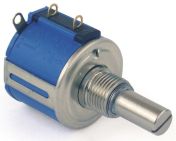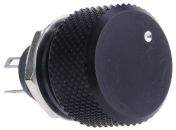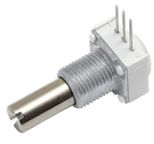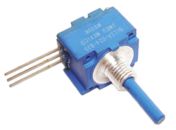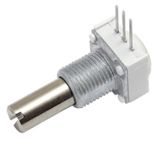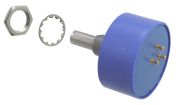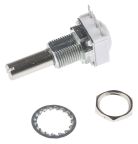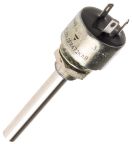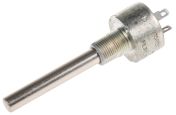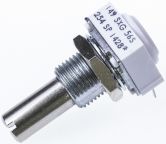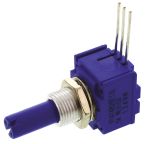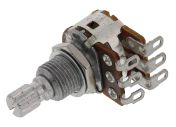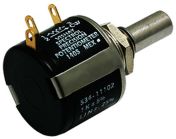Potentiometers
A potentiometer is a variable resistor. Potentiometers enable you to regulate and change the current flowing through a circuit. Potentiometers can also be called pots or potmeters. You can learn more in our complete guide to potentiometers.
Potentiometers have two terminals that are fixed to a resistive element (the track). The resistive element is typically wirewound or made from carbon, cermet or conductive plastic. The third terminal is connected to the wiper, which is a sliding contact. As the wiper moves along the track, the resistance changes and the current flowing through the circuit changes.
Types of potentiometer
Rotary potentiometers are easily controlled by turning a spindle or a knob. Rotary potentiometers can be single turn or multiturn.
Slide potentiometers are also known as slider potentiometers or fader potentiometers. To use a slide potentiometer, it's simply a case of sliding a fader along a straight track to change the resistance.
Trimmer potentiometers, sometimes called trimpots, are used to calibrate and fine-tune circuits and can be mounted straight onto a PCB (printed circuit board). Trimmer potentiometers are easy to adjust with a screwdriver.
String potentiometers (or string pots) take movement and transform it into an electrical signal.
Membrane potentiometers are completely flat. Membrane potentiometers change their resistance when pressure is applied to the membrane.
Do I need a potentiometer with a linear or logarithmic taper?
The taper you need for your potentiometer depends on the intended application.
For potentiometers with a linear taper, the resistance between one end of the track and the wiper varies at a constant rate. If you turn the potentiometer halfway or slide the fader halfway along the track, the resistance will be half of the total resistance. Linear taper potentiometers are typically used in applications such as light dimmer switches.
For logarithmic taper potentiometers, the resistance does not vary at a constant rate. The level of resistance moves exponentially up or down. A potentiometer that has been turned or moved halfway along its track, will not produce resistance that is half the total resistance. Logarithmic potentiometers are commonly used for audio applications.
What is the difference between a potentiometer and a rheostat?
The key difference is the number of terminals that each device has. Potentiometers have three terminals while rheostats only have two terminals.
Looking for peripherals for your potentiometer?
Potentiometer KnobsPotentiometer AccessoriesPotentiometer Mounting Nuts

